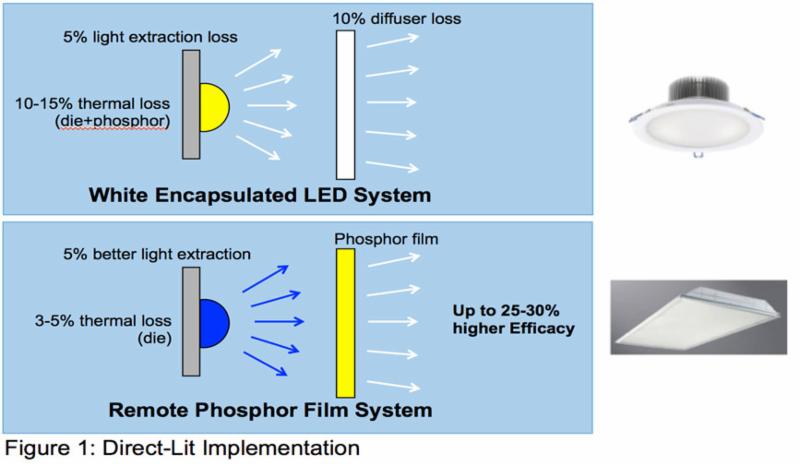Light Polymers is introducing the world's first liquid-crystal-based remote phosphor flexible film. In LED lighting, a remote phosphor film moves the blue-to-white-light converting phosphor material from the LED itself to the substrate that is located a short distance from the LEDs. This has many benefits in terms of efficiency improvement (20 to 30%), reduced glare, improved reliability and better uniformity of brightness and color reproduction. The new material from Light Polymers offers the same performance benefits, but at much lower cost and the ability to deposit on flexible substrates (current solutions are on rigid substrates).
"This is a market changer for the LED industry," noted Marc McConnaghey, President/CEO of Light Polymers, Inc. "In the lighting market we can now enable a product price point that is competitive to LED encapsulated products and eventually to incumbent non-LED solutions. This offers a clear benefit for the entire value chain, including Luminaire and LED makers and phosphor manufacturers."
Figure 1 shows a typical direct-lit LED configuration that might be used in down lights or area lights. This shows where the efficiency gains are achieved with a remote phosphor solution. Such benefits have been validated by numerous companies in published technical reports that compared the two approaches for down lights and bulb lights.
What has been holding up adoption has been the cost of a remote phosphor solution. A well known LED and Lumunaire manufacturer found that to get 20% more light it was less expensive to add two more conventional white LEDs to the package than to use a remote phosphor solution. However, the increased color quality uniformity, may justify the remote phosphor solution in specialized applications.
This math is now different with the introduction of the Crystallin remote phosphor material from Light Polymers. Table 1 shows the comparison of the films' properties compared to the leading remote phosphor material substrate - silicone. This shows improvement in light output, reductions in the cure time and phosphor material use - and most importantly - a 20 to 40% cost savings.
 |
|
Table 1: comparison of the Silicone and Crystallin Remote Phosphor Solutions |
Light Polymers achieves this improvement in efficiency by using the lyotropic liquid crystal materials to create a high index of refraction nanosuspension matrix with the phosphor material, which is deposited on a film. Light Polymers' proprietary formulation allows for high light diffusion in the film, which improves the glare and gives uniform color of light.
Light Polymers' materials provide a cost-efficient solution, by enabling roll-to-roll manufacturing methods with high yield at ambient temperature, such as slot die or comma coating. Competitive materials, such as Silicone, cannot be applied in this way due to high viscosity. Furthermore, Light Polymers' materials do not require baking or curing - they dry within minutes, while Silicone typically needs a 4 hour baking process to cure.
Multiple designs are currently being considered, including edge-lit thin form factor (Figure 2). This design is especially interesting for high-end LED luminaires and wide color gamut (WCG) displays, where thin design and high color quality are important. Some of the more advanced phosphors that enable high color rendering index (CRI) cannot withstand the high LED temperatures, and this design enables their use in these applications.
"Light Polymers materials have many unique properties that make them suitable for light management applications," according to Sergey Fedotov, technical product manager. "We enable existing manufacturing processes to be used and can rapidly formulate to final product specifications using different phosphors."














